A Holiday Book List for Wine Lovers
With the holiday season upon us, I can’t think of a better gift for someone you love (or even someone you don’t like all that much, but for some reason are obligated to buy a gift for) , than a book about wine, save perhaps for a bottle of the actual stuff. In the time since I started writing this blog, I’ve read a fair number of books on this subject, many of them about the process of growing grapes and turning them into wine, others on the joys of drinking wine, and still others on some topical issue, such as the touchy subject of natural wine.
With that in mind, I thought I’d list a few books that might make a nice gift for a friend or stocking-stuffer (yes, I know, that would be some big stocking – but you can just leave it under the tree). Most of these are books I’ve read and enjoyed, and some are volumes that I’ve put on my own list. Among those in the category of books I’ve loved, I’ve either reviewed them or have plans (and yes, I have more plans than time) to write a review on Project Sunlight. So, stay tuned. Meanwhile, here’s the list:
Some Books I’ve Loved
Of all the books I’ve read about wine, I’ve enjoyed none more than Authentic Wine by Jamie Goode and Sam Harrop MW (Master of Wine). 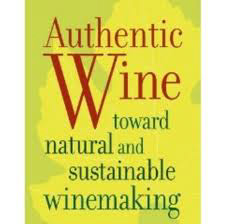 The book’s subtitle, Toward Natural and Sustainable Winemaking, gives a broad hint about where it’s heading, but one of the most appealing things about the book is its balance. The authors clearly respect the idea of natural wine and sustainable viticultural practices, but their first priority appears to be good wine, and they understand that a business isn’t sustainable if it isn’t profitable. Authentic Wine falls neatly into two parts, one dealing with viticulture and the second focusing on winemaking. I’ve read this book twice (you’d think after that I’d have taken the time to write at least a short review), and I’ll will probably read it yet one more time. They write intelligently and lucidly about a variety of current issues in the wine world, from reduction to the difference between natural and cultured yeasts to the trend toward riper fruit and higher alcohol levels. The get into the science and technical issues, but the writing is accessible and easy to follow. That’s quite a rare feat, and one of the reasons I’m so high on Jamie Goode.
The book’s subtitle, Toward Natural and Sustainable Winemaking, gives a broad hint about where it’s heading, but one of the most appealing things about the book is its balance. The authors clearly respect the idea of natural wine and sustainable viticultural practices, but their first priority appears to be good wine, and they understand that a business isn’t sustainable if it isn’t profitable. Authentic Wine falls neatly into two parts, one dealing with viticulture and the second focusing on winemaking. I’ve read this book twice (you’d think after that I’d have taken the time to write at least a short review), and I’ll will probably read it yet one more time. They write intelligently and lucidly about a variety of current issues in the wine world, from reduction to the difference between natural and cultured yeasts to the trend toward riper fruit and higher alcohol levels. The get into the science and technical issues, but the writing is accessible and easy to follow. That’s quite a rare feat, and one of the reasons I’m so high on Jamie Goode.
Also high on my list is Mike Veseth’s wonderful discussion of current wine industry trends, Wine Wars. (Reviewed March 28, 2013) Subtitled, “The Curse of the Blue Nun, the 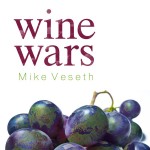 Miracle of Two-Buck Chuck, and the Revenge of the Terrorists,” this book ranges over a great deal of history to put some of the trends into context, and provides a lot of insight into some of the things, like Trader Joe’s and Costco, that are right in front of our eyes. Could a two-dollar (somewhat more outside of California) bottle of wine have succeeded if it had been sold anywhere else but at Trader Joe’s? In a world in which quality is often equated to price, it might not have worked at a retailer that had not already won the trust of its customers. And yet, in Europe, some perfectly drinkable wines sell (or at least sold recently) for a Euro a liter, making it effectively One-Buck Chuck. Mr. Veseth writes with the authority of the wine economist (a profession I did not know existed prior to reading this book), he is, and it’s clear that he not only knows a lot about wine, but that he loves it as well. The fact that his prose is both clear and engaging is just a bonus.
Miracle of Two-Buck Chuck, and the Revenge of the Terrorists,” this book ranges over a great deal of history to put some of the trends into context, and provides a lot of insight into some of the things, like Trader Joe’s and Costco, that are right in front of our eyes. Could a two-dollar (somewhat more outside of California) bottle of wine have succeeded if it had been sold anywhere else but at Trader Joe’s? In a world in which quality is often equated to price, it might not have worked at a retailer that had not already won the trust of its customers. And yet, in Europe, some perfectly drinkable wines sell (or at least sold recently) for a Euro a liter, making it effectively One-Buck Chuck. Mr. Veseth writes with the authority of the wine economist (a profession I did not know existed prior to reading this book), he is, and it’s clear that he not only knows a lot about wine, but that he loves it as well. The fact that his prose is both clear and engaging is just a bonus.
From Vines to Wines, by Jeff Cox. I read this book cover 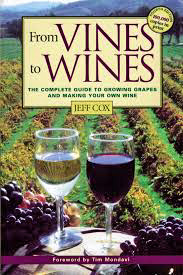 to cover when I was just getting started, and even though he talked about grapes I had never heard of (Chancellor?), at least not at the time, I recognized the information he was providing was exceptionally useful. I turn back to this small volume over and over again – for the graphics showing how to prune vines in years 1 to 3, for the tables showing the effect of pH on sulfite additions, and for the discussion of various types of yeast, among other topics. As I’ve learned more about winemaking, I’ve recognized that I can’t take everything he says as gospel –there is too much disagreement among practitioners for any approach to qualify as gospel – but I’ve found this to be a very good book, not just for rookies, but for second and third-year players as well.
to cover when I was just getting started, and even though he talked about grapes I had never heard of (Chancellor?), at least not at the time, I recognized the information he was providing was exceptionally useful. I turn back to this small volume over and over again – for the graphics showing how to prune vines in years 1 to 3, for the tables showing the effect of pH on sulfite additions, and for the discussion of various types of yeast, among other topics. As I’ve learned more about winemaking, I’ve recognized that I can’t take everything he says as gospel –there is too much disagreement among practitioners for any approach to qualify as gospel – but I’ve found this to be a very good book, not just for rookies, but for second and third-year players as well.
Wine Grapes: A Complete Guide to 1,368 Vine Varieties, Including Their Origins and Flavour, By Jancis Robinson. At $122.48 on Amazon, this book isn’t cheap, but it’s well worth the price. It’s only a matter of time before you pick up a bottle of wine (or receive one as a gift – it’s that time of the year!) that’s based on a grape you’ve never heard of. For me, most recently, it was a gift of a bottle of red from New Jersey that was made with the Baco Noir grape. I tasted the wine, and immediately opened Robinson’s Wine Grapes to find out just what the hell Baco Noir was. I have to say, it’s almost inconceivable that you’ll ever run across a wine made from a grape that isn’t discussed in this book. Wine Grapes is a thick volume, and it comes in its own protective case – perfect to protect it on the coffee table or the book shelf.
The Emperor of Wine: The Rise of Robert M. Parker, Jr., 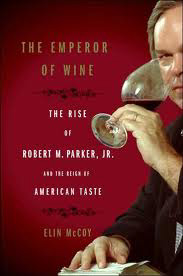 and the Reign of American Taste, By Elin McCoy. (Reviewed on April 30, 2011.) It’s almost impossible to overstate Robert Parker’s influence on the wine industry. You may hate him for it if you think that wineries went overboard on big, high-alcohol wines in an effort to win points from Parker’s Wine Advocate, and you may think his 100-point rating system (since copied by others) suggests a degree of precision that is unobtainable in the world of wine tasting. But whatever his perceived flaws, who else was on the side of the average wine buyer when he got started? McCoy describes a culture of wine criticism pre-Parker, in which it was not unusual for the critic to leave his trunk open while visiting a high-end chateau, knowing that the proprietor would fill it with wine. Parker, by contrast, did not accept freebies. McCoy’s book is a balanced presentation of Parker, with all his warts and blemishes, as well as his many virtues. Parker is an interesting character who played an important role in shaping the wine industry, and McCoy spins a great little yarn about him.
and the Reign of American Taste, By Elin McCoy. (Reviewed on April 30, 2011.) It’s almost impossible to overstate Robert Parker’s influence on the wine industry. You may hate him for it if you think that wineries went overboard on big, high-alcohol wines in an effort to win points from Parker’s Wine Advocate, and you may think his 100-point rating system (since copied by others) suggests a degree of precision that is unobtainable in the world of wine tasting. But whatever his perceived flaws, who else was on the side of the average wine buyer when he got started? McCoy describes a culture of wine criticism pre-Parker, in which it was not unusual for the critic to leave his trunk open while visiting a high-end chateau, knowing that the proprietor would fill it with wine. Parker, by contrast, did not accept freebies. McCoy’s book is a balanced presentation of Parker, with all his warts and blemishes, as well as his many virtues. Parker is an interesting character who played an important role in shaping the wine industry, and McCoy spins a great little yarn about him.
Judgment of Paris, By George M. Tabor. If you saw the movie, Bottle Shock, you’ll probably be prepared to like this book, unless of course, you’re turned off by mediocre movies. But the book is something different, a fascinating story about the development of the California wine industry and a commentary on how the famed judgment of Paris influenced the growth of new world wines generally, from New Zealand to South Africa. The Judgment of Paris, of course, is the story of a group of upstart California wineries who beat some of the best French wineries in a blind tasting sponsored by the now-well-known Steven Spurrier. But for the presence of Time magazine correspondent George Tabor at the tasting, it might have gone unnoticed. As it was, it turned into the faint trumpeting of the start of a revolution, one that has given new world wines equal footing alongside those of France and the rest of the old world. The movie was no Sideways, but even so, I couldn’t help but enjoy it. And the book is a gem..
How to Love Wine: A Memoir and Manifesto, by Eric Asimov: You’ll like this book a lot more if you like Eric Asimov’s 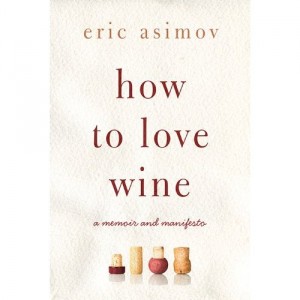 personality, but that shouldn’t be too hard. He’s smart, funny, and possesses all of the other qualities that makes a person likeable. And it doesn’t hurt that he writes well. He also doesn’t take himself too seriously, and he has a down to earth approach to wine. In a world of overwritten tasting notes, Asimov has this crazy idea that we should be satisfied with the fact that wine brings pleasure. And for those of us who spit while tasting, Asimov has a rejoinder: part of the experience is actually swallowing the wine. A fast and enjoyable read. — a pleasure, if you will, just like a good bottle of wine.
personality, but that shouldn’t be too hard. He’s smart, funny, and possesses all of the other qualities that makes a person likeable. And it doesn’t hurt that he writes well. He also doesn’t take himself too seriously, and he has a down to earth approach to wine. In a world of overwritten tasting notes, Asimov has this crazy idea that we should be satisfied with the fact that wine brings pleasure. And for those of us who spit while tasting, Asimov has a rejoinder: part of the experience is actually swallowing the wine. A fast and enjoyable read. — a pleasure, if you will, just like a good bottle of wine.
Wine Grape Production Guide for Eastern North America, edited and written in large part by Virginia Tech’s Tony Wolf, is the essential reference for anyone even thinking of starting a vineyard on the east coast. For that matter, it’s probably useful for anyone in the business of growing wine grapes, no matter where they’re located. Tony is a central character in the development of the Virginia wine industry, and this book makes it clear why that’s so. If you’re thinking of getting into the business commercially or if you just want to start a small hobby vineyard, this book has just about everything you need to know.
Naked Wine: Letting Grapes Do What Comes Naturally is Alice Feiring’s excellent adventure through the world of natural wine. Her book reads like a blog, which can be good or bad, depending upon how her personality wears on you. Either way, she clearly knows a good deal about wine and natural wine in particular. If you are theological in your approach to natural wine, you’ll love the book. If not, you’ll probably still enjoy it. For my part, it introduced me to a whole new way of thinking about wine.
Some books that I’ve put on my Christmas list:
The Science of Wine: From Vine to Glass, by Jamie Goode: What can I say, I’m a sucker for at least two things  (besides good wine): books with the word “science” in their title, and books written by Jamie Goode (see the capsule on Authentic Wine above). Authentic Wine incorporated an amazing amount of current research, and so I have to believe that this book will distinguish itself in a like manner. It’s pretty close to the top of my list, and I’m praying that someone who owes me a Christmas gift is reading this.
(besides good wine): books with the word “science” in their title, and books written by Jamie Goode (see the capsule on Authentic Wine above). Authentic Wine incorporated an amazing amount of current research, and so I have to believe that this book will distinguish itself in a like manner. It’s pretty close to the top of my list, and I’m praying that someone who owes me a Christmas gift is reading this.
Extreme Wine: Judging by the description provided in the subtitle (Searching the World for the Best, the Worst, the Outrageously Cheap, the Insanely Overpriced, and the Undiscovered), I probably wouldn’t give Extreme Wine a second look, except that its author is the same Mike Veseth who wrote Wine Wars, above, one of my very favorite books on wine. Anyone who reads Mike’s blog, The Wine Economist, is probably ready to buy this book without any additional information. But if you don’t read his blog (and if you are interested at all in the subject of wine, you should), trust me: the odds are pretty high that the book is worth reading. All I can say is that I hope my family is reading this post.
Understanding Wine Technology, by David Bird: I’m 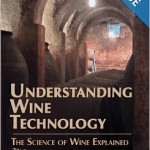 planning to build a small hobby winery, which involves a certain amount of science and technology, and I’d also like to incorporate more technology into the vineyard, so this seems like the right book for me. One Amazon reviewer quotes Bird saying this: “The book is aimed at the person with no formal scientific training, yet who is interested in the science behind wine and wants to know the mechanism behind the complex transformations that take place.” Okay, see my capsule on the Jamie Goode book above. Yes, I am a sucker for books about wine and science, and since I’m pretty far from being a scientist, I appreciate books written for those of us with no formal scientific training. This book, by the way, is an updated third edition.
planning to build a small hobby winery, which involves a certain amount of science and technology, and I’d also like to incorporate more technology into the vineyard, so this seems like the right book for me. One Amazon reviewer quotes Bird saying this: “The book is aimed at the person with no formal scientific training, yet who is interested in the science behind wine and wants to know the mechanism behind the complex transformations that take place.” Okay, see my capsule on the Jamie Goode book above. Yes, I am a sucker for books about wine and science, and since I’m pretty far from being a scientist, I appreciate books written for those of us with no formal scientific training. This book, by the way, is an updated third edition.
The World Atlas of Wine, by Hugh Johnson and Jancis Robinson. Hugh Johnson needs no introduction and Jancis Robinson is apparently irresistible to me (note books above and immediately below). The reviews I’ve read put this book somewhere between “gotta have” and indispensable. So, I put it on my wish list. Hint, hint.
How to Taste: A Guide to Enjoying Wine, by Jancis Robinson: As I said above, apparently I can’t resist books by Jancis Robinson, Master of Wine, columnist for the Financial Times, author of many books, proprietor of JancisRobinson.com and the “Purple Pages,” and the star in a series of films about wine. I watched “Jancis Robinson’s Wine Course,” available on Netflix, and was pretty much sold on her as a wine guru. In an industry filed with snobs, she is down to earth, personable, and definitely not a snob. And oh, my God, she knows so much about wine!
Wines of Eastern North America: From Prohibition to the 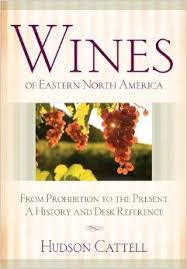 Present and A History and Desk Reference by Hudson Cattell. Mark Chien, Wine Grape Educator for Penn State Cooperative Extension Service, describes Hudson Cattell as “the institutional memory for the eastern U.S. wine industry,” and says that of the many great things about this book, “the best part of all may be the extensive desk reference (appendices) that cover topics such as the origins of Eastern wine grapes, and how French hybrids were developed and named.” (The next issue of Grape Press, the quarterly publication of the Virginia Vineyards Association, will republish his review.) If you’re a wine nerd like me, and if you’re also interested in east coast wines, then this book may be perfect for you. It’s also very high on my wish list.
Present and A History and Desk Reference by Hudson Cattell. Mark Chien, Wine Grape Educator for Penn State Cooperative Extension Service, describes Hudson Cattell as “the institutional memory for the eastern U.S. wine industry,” and says that of the many great things about this book, “the best part of all may be the extensive desk reference (appendices) that cover topics such as the origins of Eastern wine grapes, and how French hybrids were developed and named.” (The next issue of Grape Press, the quarterly publication of the Virginia Vineyards Association, will republish his review.) If you’re a wine nerd like me, and if you’re also interested in east coast wines, then this book may be perfect for you. It’s also very high on my wish list.
And finally, I can’t wait to read Jeff Siegel’s (aka the Wine Curmudgeon) new book on inexpensive quality wines, “The Wine Curmudgeon’s Guide to Cheap Wine” I’ve been reading his blog postings for a while now, and he definitely seems to understand the difference between inexpensive wine and cheap wine, despite the title of his book. But since most of us can’t spend $50, or even $20 a night on wine, Siegel’s ability to sniff out inexpensive bottles of high-quality wine is just what the budget doctor ordered. And if the Amazon link doesn’t work (don’t ask, I have no idea why it doesn’t always work), go directly to Jeff’s web site, and order the book there.
So, I could go on for a while, but I think this list is sufficiently robust to get a newbie started in the world of wine enjoyment, and perhaps to provide an idea or two for the more advanced student. So, enjoy!
Cheers, and Happy Holidays!
Bob
Category: All Posts, Books, Books about wine, Resources, Wine


